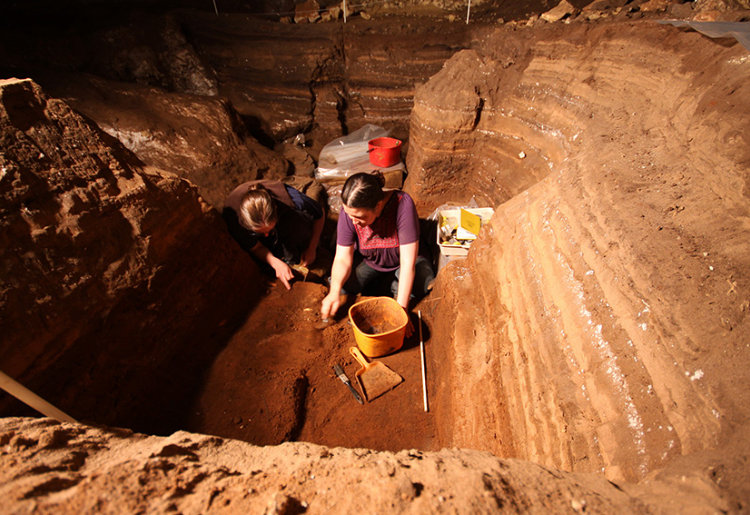Other media
Published on 21 July, 2020
Love at first cave for newly appointed South Australian Museum researcher
The appointment of Dr Elizabeth Reed, Naracoorte Caves palaeontology expert, as Vertebrate Palaeontologist Researcher by the South Australian Museum, is set to see the effects of climate change on animal life placed under the spotlight.

South Australian Museum Director, Mr Brian Oldman, said that Dr Reed’s research into the extinct megafauna of South Australia provides evidence that Australia had fascinatingly diverse fauna in the past.
“Dr Reed’s research at South Australia’s only World Heritage listed area, the Naracoorte Caves, provides evidence that climate change played a significant part in the demise of iconic animals, including today’s equivalent of a giant wombat called the Diprotodon, a 200kg kangaroo known as Procoptodon goliah, and the five-metre snake Wonambi naracoortensis that roamed South Australia up to 45,000 years ago” said Mr Oldman.
“As a leading expert in her field, Dr Reed helps answer questions about how lost biodiversity irretrievably impacts the world we live in,” he said.
Dr Reed said that joining the South Australian Museum team will see her further explore the globally significant fossil record of South Australia and hopefully transform the way that people think about species extinction.
“I first went to the Naracoorte Caves to study fossils as an undergraduate student and was struck by the caves being an underground archive of lost worlds,” said Dr Reed.
Over the past 500,000 years the limestone caves have preserved exceptional deposits of fossils from amphibians, reptiles, birds and mammals, including Australia’s lost giants known as the ‘megafauna’.
“As a palaeontologist I can study this fossil record to see how the past has shaped our present and use this information to inform how we conserve natural environments in the future,” said Dr Reed.
“Looking through the window of the past I see a very different Australia to the one we have now. I see an Australia abundant with animals that are sadly no longer around. This includes not only the megafauna, but also species that disappeared only recently and some that still face the threat of extinction.”
“The South Australian Museum has enjoyed a long association with the Naracoorte Caves, both from a research perspective and also by sharing the story of its remarkable fossil record with the community. It will be a privilege for me to continue my research and add to the significant megafauna fossil collections at the Museum,” Dr Reed said.
Footnotes
Photo Steve Bourne